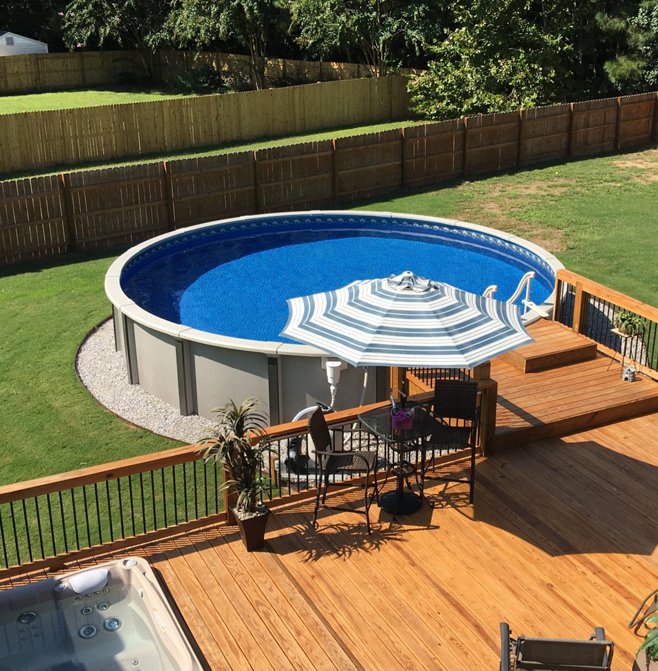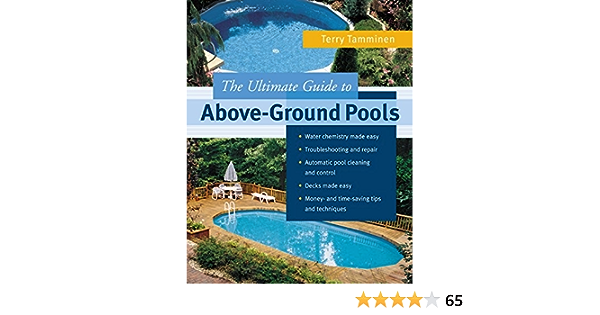Tired of guessing if your pool's filtration system is working properly? Say goodbye to uncertainty by installing a pool flow meter. This device provides accurate readings of your water flow rate, ensuring optimal performance and maintenance. In this article, we'll guide you through the step-by-step process in an easy and efficient manner. From gathering supplies to cutting the return line, we'll cover it all. Don't let the installation intimidate you – with our comprehensive guide, you'll become a pro in no time!
Key Takeaways
- The supplies needed for installing a pool flow meter include a hacksaw, sandpaper, unions, wrench, gaskets/O-rings, and Teflon tape.
- The installation steps for analog and digital flow meters involve measuring the end of the meter, drilling a hole into the pipe, and using clamps to hold the meter in place.
- For digital flow meters, it is important to locate the power connection point, connect the power cord or wiring connectors, and ensure proper securing and alignment.
- Tips for properly installing a pool flow meter include choosing the right location, measuring twice and cutting once, checking for leaks immediately, and cleaning the flow meter regularly.
The Importance of a Pool Flow Meter in Pool Maintenance
Having a pool flow meter is crucial for maintaining your pool's optimal performance and ensuring proper water flow. The benefits of using a pool flow meter for pool maintenance are numerous. First and foremost, a flow meter allows you to monitor the water flow rate in real-time, providing valuable information about the efficiency of your pool system. By measuring the flow rate, you can identify any potential issues such as clogged filters or blocked pipes, which can lead to reduced water circulation and decreased pool performance. Additionally, a flow meter can help you determine the correct chemical dosage for your pool, as it provides accurate measurements of the water volume passing through the system. This ensures that you are using the right amount of chemicals, preventing over or under-treatment of the water.
When choosing the right pool flow meter for your needs, there are a few factors to consider. First, determine the flow rate range that your pool requires. Different flow meters have different maximum flow rates, so make sure to choose one that can handle the water volume of your pool system. Additionally, consider the installation method that suits your setup. There are analog, digital, and inline flow meters available, each with their own installation requirements. Analog flow meters are straightforward to install and read, while digital flow meters provide more precise measurements and often come with additional features. Inline flow meters are installed directly into the plumbing system and provide accurate readings without obstructing the water flow. Lastly, consider the size and compatibility of the flow meter with your existing pipes. Ensure that the diameter of the flow meter matches the diameter of your pipes for a proper fit. By choosing the right pool flow meter, you can effectively monitor and maintain your pool's water flow, ensuring optimal performance and a clean swimming experience.
Tools and Materials Required for Installing a Pool Flow Meter
To properly set up your pool flow meter, you'll need a hacksaw, sandpaper, unions, a wrench, gaskets or O-rings, and Teflon tape.
- Choosing the right location: It is crucial to select the appropriate spot for installing your pool flow meter. Consider factors such as accessibility, visibility, and proximity to the filtration system.
- Proper maintenance of a pool flow meter: Regular maintenance is essential to ensure accurate readings and prolong the life of your flow meter. Clean the meter regularly to remove any debris or buildup that may affect its performance.
Now that you have gathered all the necessary tools and understand the importance of proper maintenance, you are ready to proceed with the installation process. In the following section, we will provide you with a step-by-step guide for installing a pool flow meter.
Step-by-Step Guide for Installing a Pool Flow Meter
Now, let's go through the process of setting up the flow meter for your pool. Installing a pool flow meter can provide numerous benefits, such as monitoring water flow rate, detecting leaks, and optimizing pool equipment performance. To ensure accurate measurements and proper functioning, it's important to follow the installation steps carefully. Here's a step-by-step guide:
| Step | Description |
|---|---|
| 1 | Determine the installation location. Choose a straight section of pipe with enough space for the flow meter. |
| 2 | Turn off the pool pump to prevent water from flowing during installation. Safety first! |
| 3 | Cut the return line using a hacksaw. Remember to measure twice and cut once for accurate results. |
| 4 | Install unions on both sides of the cut pipe. Use a wrench to tighten them securely. |
| 5 | Install the flow meter. Follow the specific instructions provided by the manufacturer for your chosen type of flow meter. |
For optimal performance and longevity of your pool flow meter, here are some tips for maintenance:
- Clean the flow meter regularly to remove any debris or buildup that could affect its accuracy.
- Check for leaks immediately after installation and periodically thereafter.
- Monitor the flow meter readings regularly to detect any changes that might indicate a problem.
- Download a free pool care checklist for a comprehensive guide to maintaining your pool.
Calibration Tips for Accurate Flow Measurement
To ensure accurate flow measurement, you should regularly calibrate your pool flow meter according to the manufacturer's instructions. Proper calibration techniques are essential for maintaining flow meter accuracy. Here are some important tips to help you calibrate your pool flow meter effectively:
- Follow the manufacturer's instructions: Each flow meter may have specific calibration procedures outlined by the manufacturer. It is crucial to carefully read and follow these instructions to ensure accurate calibration.
- Use a reference standard: A reference standard is a device with a known flow rate that can be used to compare the measurements of your flow meter. This can help you identify any discrepancies and adjust the calibration accordingly.
- Consider environmental factors: Factors such as temperature, pressure, and humidity can affect the accuracy of your flow meter. It is important to take these factors into account during the calibration process to ensure accurate readings.
- Regularly check and adjust: Flow meters can drift over time, resulting in inaccurate measurements. Regularly checking and adjusting the calibration of your flow meter can help maintain its accuracy and reliability.
Troubleshooting Common Issues With Pool Flow Meters
If you're experiencing any issues with your pool flow meter, there are common troubleshooting techniques that can help you resolve them. Proper flow meter maintenance is essential for accurate readings and optimal performance. Here are some troubleshooting tips to help you address common issues with your pool flow meter.
First, check for any obstructions that could affect the reading. Debris or dirt buildup can block the flow and cause inaccurate readings. Clean the flow meter regularly to prevent this issue.
Next, verify that the flow meter is installed correctly and all connections are tight. Loose connections can cause leaks and disrupt the flow measurement. Ensure that the unions and gaskets are properly installed and tightened with a wrench.
If you're still experiencing issues, check if the flow meter requires calibration. Some flow meters need periodic calibration to maintain accuracy. Refer to the manufacturer's instructions for specific calibration procedures.
Additionally, inspect your filtration system for any blockages or restrictions. A clogged filter or pipe can affect the flow meter's performance. Clear any obstructions to restore proper flow.
If these troubleshooting techniques don't resolve the problem, consider replacing the flow meter. Over time, flow meters can wear out or become damaged, leading to inaccurate readings. Replace the flow meter if it's at the end of its useful life.
Frequently Asked Questions
How Often Should a Pool Flow Meter Be Cleaned?
To properly maintain your pool flow meter, regular cleaning is essential. The frequency of cleaning depends on factors such as the pool's usage and surrounding environment. However, as a general guideline, it is recommended to clean the flow meter at least once every three months. This will help prevent any build-up or debris that can affect its accuracy. Regularly inspecting the flow meter for any signs of damage or blockages is also important for troubleshooting and ensuring optimal performance.
Can a Pool Flow Meter Be Installed on Any Size Pipe?
Yes, a pool flow meter can be installed on any size pipe. The pool flow meter installation process involves determining the installation location, cutting the return line, and installing unions. Then, you can install the flow meter by measuring the end, drilling a hole into the pipe, and using clamps to hold it in place. The benefits of using a pool flow meter include accurately measuring water flow rate, identifying any obstructions or restrictions, and ensuring proper filtration system performance.
Are There Any Specific Safety Precautions to Take When Installing a Pool Flow Meter?
When installing a pool flow meter, it's important to take specific safety precautions. Before starting the installation process, make sure to turn off the pool pump and check for any loose or exposed wires. When cutting the return line, use a hacksaw and smooth the edges with sandpaper. Install unions on both sides of the cut pipe and tighten them with a wrench. Always refer to the manufacturer's instructions for proper installation guidance.
Is It Necessary to Hire a Professional to Install a Pool Flow Meter?
When it comes to installing a pool flow meter, you might be wondering if hiring a professional is necessary. While it is possible to do a DIY installation, hiring professionals can ensure a proper and efficient installation process. They have the knowledge and experience to handle any challenges that may arise and can guarantee the accuracy and functionality of the flow meter. However, if you are confident in your DIY skills and follow the manufacturer's instructions carefully, you can successfully install a pool flow meter yourself.
Can a Pool Flow Meter Be Installed on an Above-Ground Pool?
Yes, a pool flow meter can be installed on an above-ground pool. Installing a flow meter on your above-ground pool has several benefits. It helps you monitor the flow rate of water, ensuring that your pool is circulating properly. This can prevent issues like low water flow and inadequate filtration. By accurately measuring the flow rate, you can also optimize the performance of your pool equipment and save on energy costs. Installing a pool flow meter is a simple and effective way to maintain the health of your above-ground pool.
Conclusion
Installing a pool flow meter may seem daunting, but with our comprehensive guide, you'll be able to do it like a pro. By accurately measuring your water flow rate, you can ensure optimal performance and maintenance of your pool's filtration system. Don't let guesswork get in the way of a well-maintained pool. Choose the right flow meter for your needs and enjoy a worry-free swimming season. Dive into our step-by-step instructions and make your pool maintenance a breeze.


